MusicRadar Verdict
Misha is a perfect tool for generative music, jam sessions and fun explorations into new musical territories.
Pros
- +
Fantastic for jamming and experimenting.
- +
Flexible CV patch points.
- +
Lovely screen.
Cons
- -
Muscle memory for performance can take time.
- -
No USB compatibility for controllers.
- -
No velocity sensitivity on the playable buttons.
MusicRadar's got your back
Eventide Misha: What is it?
Recent times have seen a number of sequencers hit the market that aim to encourage experimentation, such as Intellijel’s Metropolix. Eventide has joined this area of modular fun with Misha and it has taken a very different approach, with an intervalic method of generating pitch changes.
First up the module itself. The 28hp module is large but shallow at under two centimetres, so it will fit in most skiff-style rigs. That overall use of horizontal pitch should be forgiven, or praised, as it does make the performance aspect of Misha more comfortable – there is just the right amount of room to not feel cramped, whilst the controls aren’t so spaced out that you have to stretch to reach.
The controls are well laid out and are dominated by the V-shaped array of buttons used for interval selection. These are illuminated, showing different states of the module and, as with the rest of Misha, are clearly labelled. Above these is a very bright and clear display, which is similarly well laid out, with note, scale and octave information taking the most space, although this changes when accessing menus and options.
As much as button-per-function is nice, the balance between physical format and capability is good here and, although it will take a little learning to master all the button combos, it is worth the investment as the playable experience is so good.
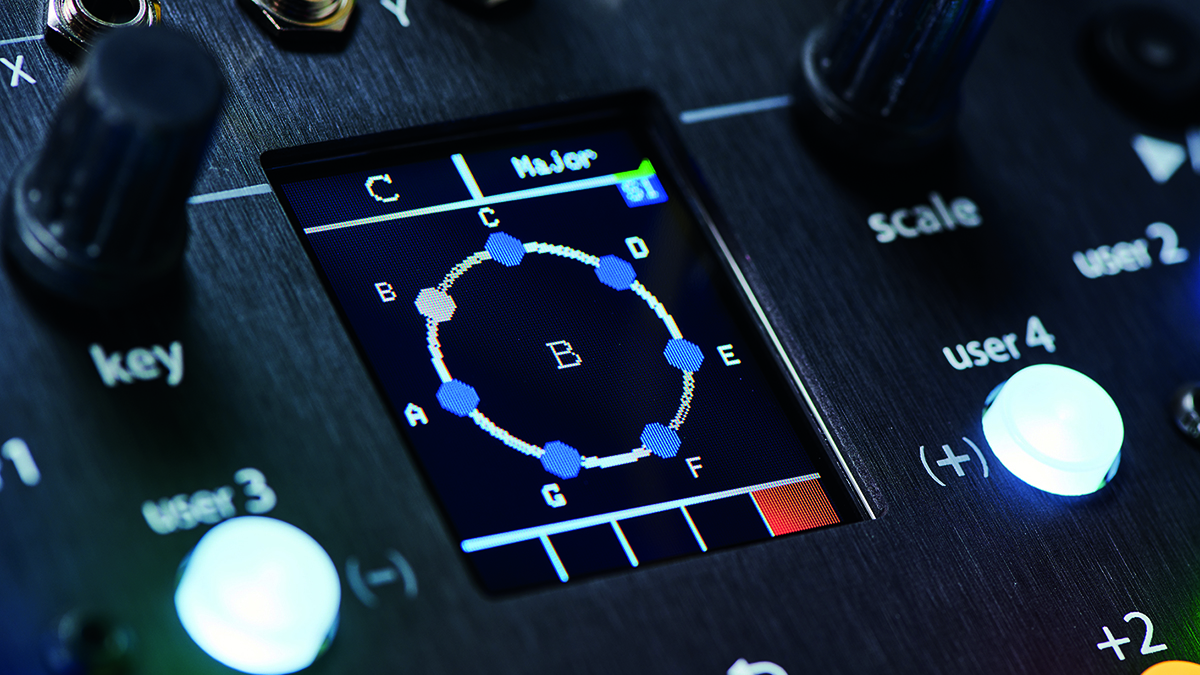
The screen is bookended by two rotary controllers, used for accessing various menu options, but most commonly for accessing the key and scale for the current patch. Below this is a bank of four buttons. These have preset functions but are all user definable. Record/Stop and Play/Pause buttons, along with an up and down shift button, finish off the physical interactions.
Misha does feature an onboard VCO but for many users, getting pitch information out of Misha and into their chosen voices will be the order of the day. Eventide has been pretty generous here, with three CV outs, meaning this can act as a polyphonic sequencer. Although there is an internal clock Misha can be externally clocked via CV or MIDI and features a nicely implemented clock divider.
Other ports include a micro USB, mostly for installing firmware updates. As it stands you cannot plug in a MIDI controller keyboard, which would be great as the playable buttons aren’t velocity sensitive. Though we are informed that this is something Eventide is working on. You can, however, attach a qwerty keyboard, but more on that later on.
A micro SD card is included for storing and loading presets and MIDI is on offer via a pair of mini TRS jacks, one each for in and out, so no through option here, although that isn’t too big a loss. When using the onboard voice, you can output via a stereo pair of outputs, then on to the rest of your rig for filtering and modulations, etc.
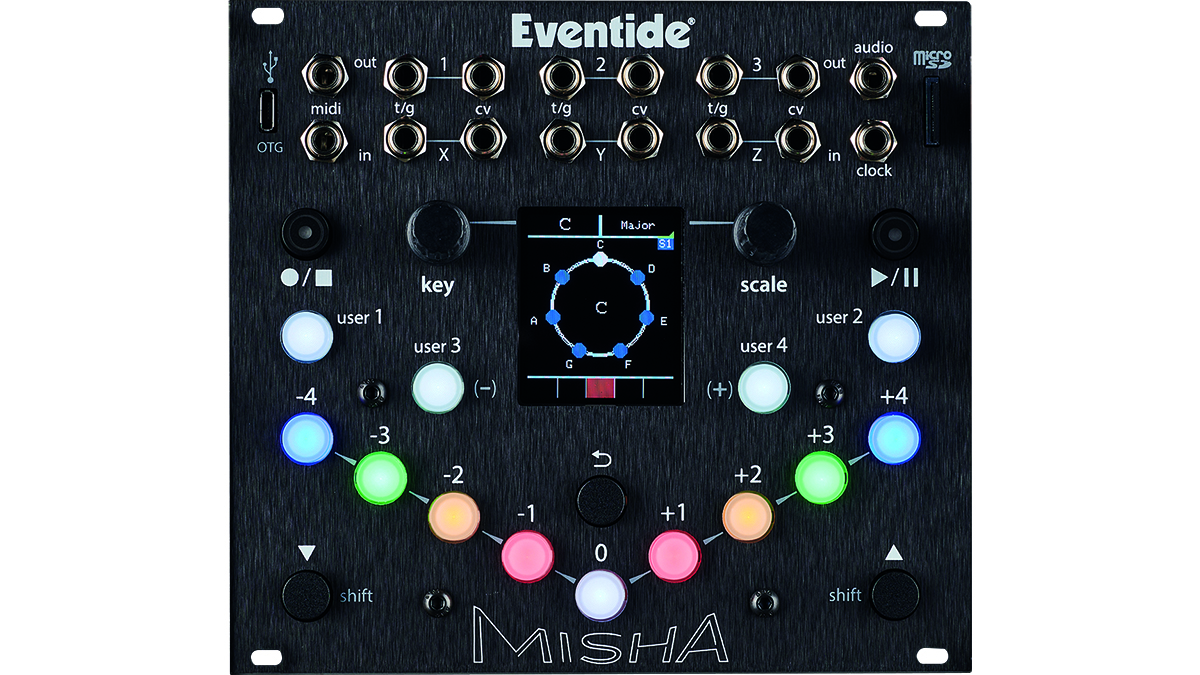
Eventide Misha: Performance and verdict
This brings us to the meat of Misha. What is it like in use? Well, there’s a lot to cover but the headline is fun… but with caveats. Simply patched up to output audio Misha, as a playable device, is a fantastic idea that caters to those with and without much music theory knowledge.
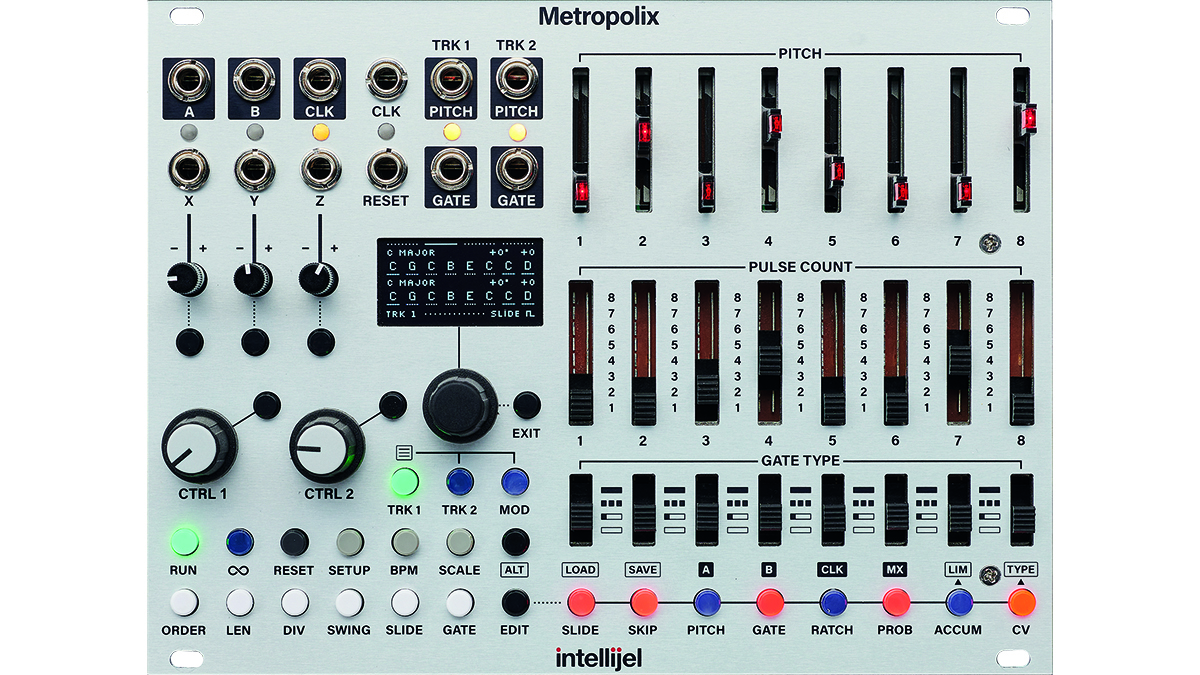
• Intellijel Metropolix
Intellijel’s wonderful performance sequencer is a fantastic option for generative music and jamming, with a bunch of tools for evolving and morphing a sequence.
• Erica Synths Black Sequencer
While more of a traditional sequencer, Erica Synths has made a killer unit, with four tracks of CV and gate, plus the magic randomiser button, helping to keep this playful and unexpected.
The ‘keyboard’ is a set of buttons that don’t equate to musical notes but to intervals. At the point of the V array is a ‘0’ button which will replay the last note, then there are two sets of four buttons that play increasingly more or less intervals, so the first button to the right plays one interval higher, the second plays two intervals, and so on.
Note values are dictated not by these buttons but by the currently selected key and scale, accessed by the rotary knobs. There are more scales included than will ever realistically be exhausted, meaning you’ll be good to go even if you want to explore microtonal territories, as well as your more commonly used scales. You can access different musical modes too. The buttons are illuminated, aiding in learning the mode Misha is in, along with pinning down muscle memory.
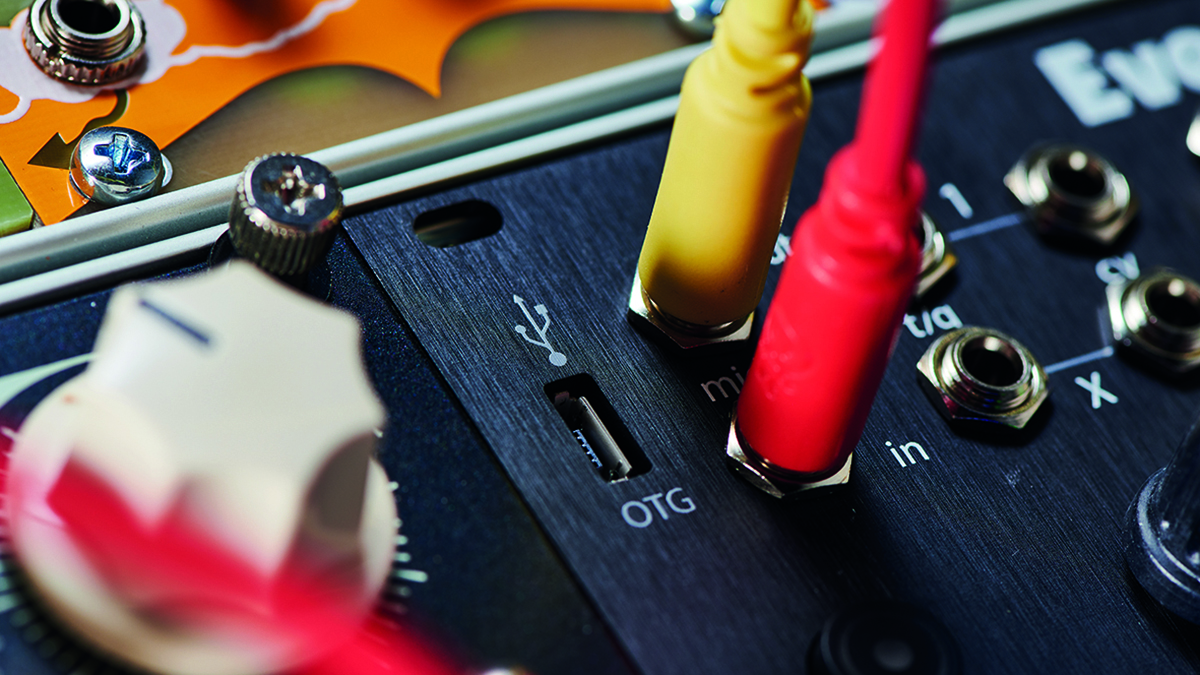
For those with less theory knowledge playing Misha is probably more intuitive, but for those with some, or who play keyboards, it might come as a little struggle. The practice takes a little getting used to, as playing one button up, then repeating, will cause two different notes to play, in two interval steps.
Once you’re familiar with it, Misha becomes an incredible tool for experimenting and jamming. Much like Metropolix, the key to success here is in creating happy accidents while retaining a level of control.
Setting a key and scale and interacting with the intervals rather than the notes is a wild ride but one which remains in sync with the rest of your track (should you have one) and playing it as an instrument is quite the experience.
Of course, there is also a chord mode, with three notes output via CV or MIDI. The chord type can be accessed via the menus easily and intuitively but it’s not possible to play a seventh, followed by a third, which does limit the possibilities.
The sequencer is yet another way to be explorative in your musical journey. Misha takes a detour from the norm here too. Rather than laying down a series of notes, you hit record, and then use the interval buttons to play a sequence. Misha will stop recording and begin playback when the number of notes in the scale is reached.
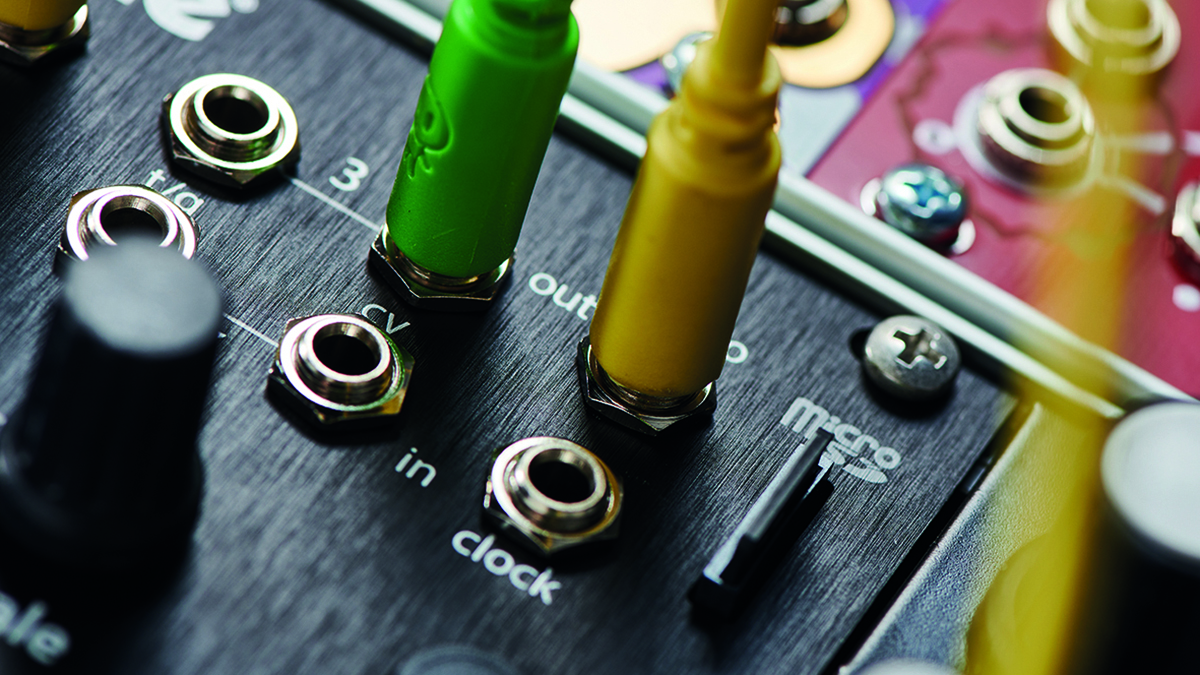
It has some limitations, however, as you can’t currently run a sequence that repeats a note, but limitations can feed creativity, which is what Misha is all about. It’s a different way of thinking and one that inspires the user to think creatively, as should be expected of a device that lets you plug in a qwerty keyboard to play it. Yes, that’s right. You can do that.
The MIDI implementation is pretty good too, so for those who prefer the good old black and whites, you can plug in and play that way too. That said it isn’t the same as playing the piano. Oh no. That just wouldn’t be the Misha way of doing things. If using a keyboard you’ll still be inputting intervals, rather than notes. Misha will just take the nearest interval to the note pressed. One benefit of doing this is that you can take advantage of other features of the controller used, such as velocity and trigger outputs.
There’s more on offer than can be covered in this space, but Misha is a jamming and experimentation dream. It forces different thinking and playing approaches that, while they can be learned, encourage a different type of creativity.
MusicRadar verdict: Misha is a perfect tool for generative music, jam sessions and fun explorations into new musical territories.
Eventide Misha: The web says
"Impressively, it contributes something very exciting to the world of sequencing and Eurorack in general, offering an inspiring approach to melodic sequencing which works well any style of music."
JunoDaily
Eventide Misha: Hands-on demos
Eventide Audio
loopop
Patchwerks
Perfect Circuit
Starsky Carr
Eventide Misha: Specifications
- KEY FEATURES Interval-based performance instrument and sequencer, 100 built-in scales, Polyphony via CV or MIDI, External control via MIDI or qwerty keyboard.
- CONTACT: Eventide
“Sometimes I am two people. Johnny is the nice one. Cash causes all the trouble. They fight”: How Johnny Cash drew on his own experiences to make his greatest songs
“For those on the hunt for a great quality 12-string electro-acoustic that won’t break the bank, it's a no-brainer”: Martin X Series Remastered D-X2E Brazilian 12-String review
“I have that on more records than anything else”: Take a peek inside Vaughn Oliver’s studio










